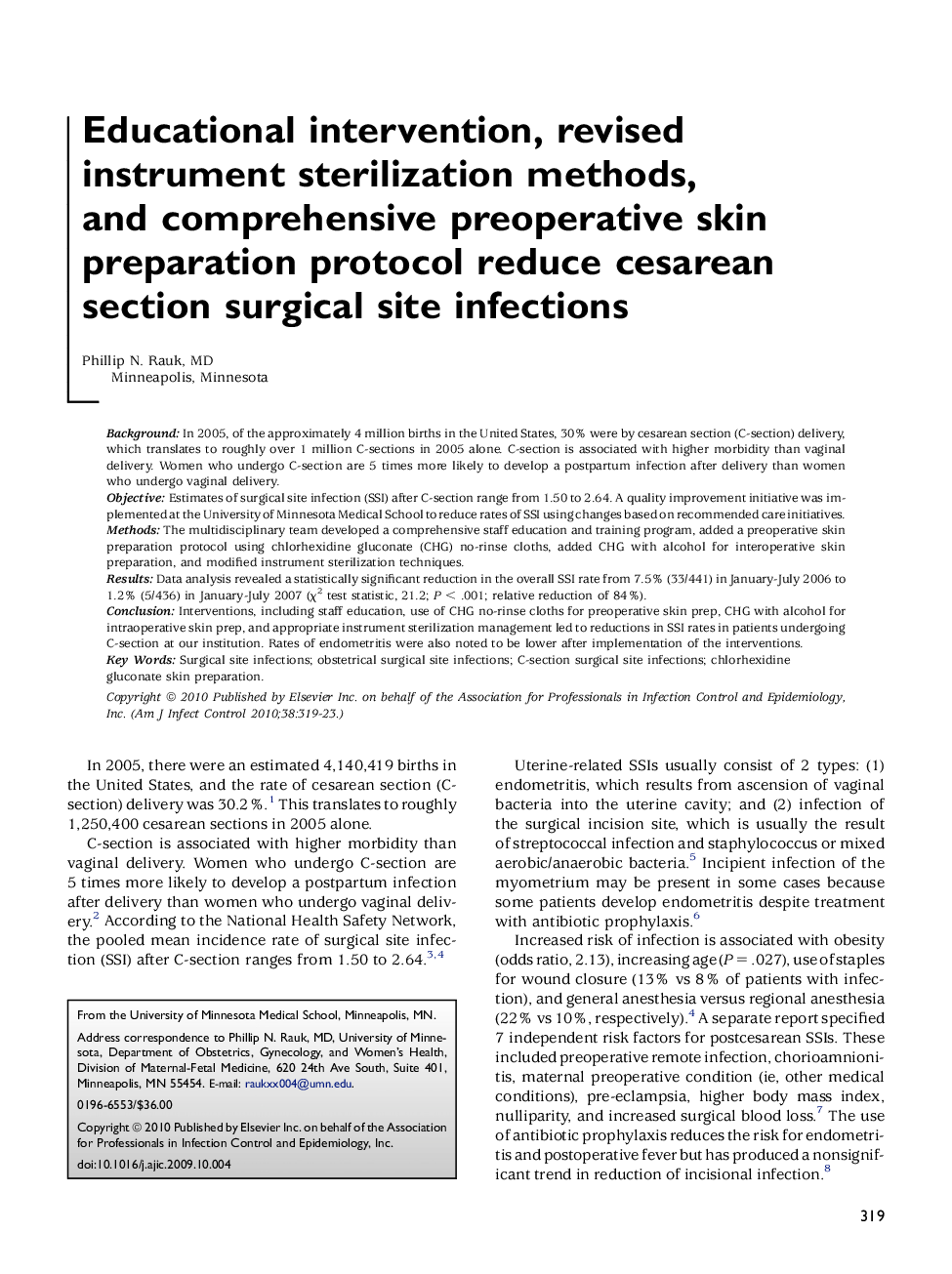| Article ID | Journal | Published Year | Pages | File Type |
|---|---|---|---|---|
| 2640413 | American Journal of Infection Control | 2010 | 5 Pages |
BackgroundIn 2005, of the approximately 4 million births in the United States, 30% were by cesarean section (C-section) delivery, which translates to roughly over 1 million C-sections in 2005 alone. C-section is associated with higher morbidity than vaginal delivery. Women who undergo C-section are 5 times more likely to develop a postpartum infection after delivery than women who undergo vaginal delivery.ObjectiveEstimates of surgical site infection (SSI) after C-section range from 1.50 to 2.64. A quality improvement initiative was implemented at the University of Minnesota Medical School to reduce rates of SSI using changes based on recommended care initiatives.MethodsThe multidisciplinary team developed a comprehensive staff education and training program, added a preoperative skin preparation protocol using chlorhexidine gluconate (CHG) no-rinse cloths, added CHG with alcohol for interoperative skin preparation, and modified instrument sterilization techniques.ResultsData analysis revealed a statistically significant reduction in the overall SSI rate from 7.5% (33/441) in January-July 2006 to 1.2% (5/436) in January-July 2007 (χ2 test statistic, 21.2; P < .001; relative reduction of 84%).ConclusionInterventions, including staff education, use of CHG no-rinse cloths for preoperative skin prep, CHG with alcohol for intraoperative skin prep, and appropriate instrument sterilization management led to reductions in SSI rates in patients undergoing C-section at our institution. Rates of endometritis were also noted to be lower after implementation of the interventions.
